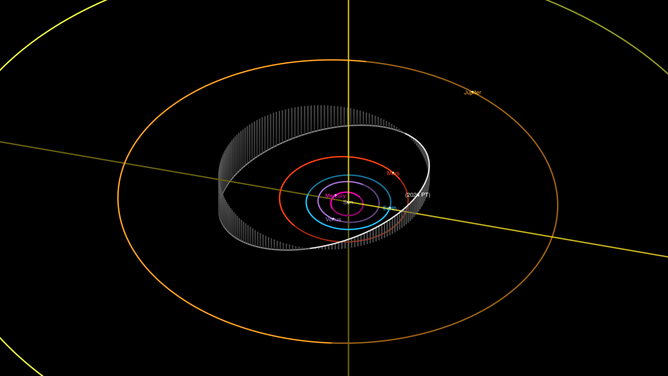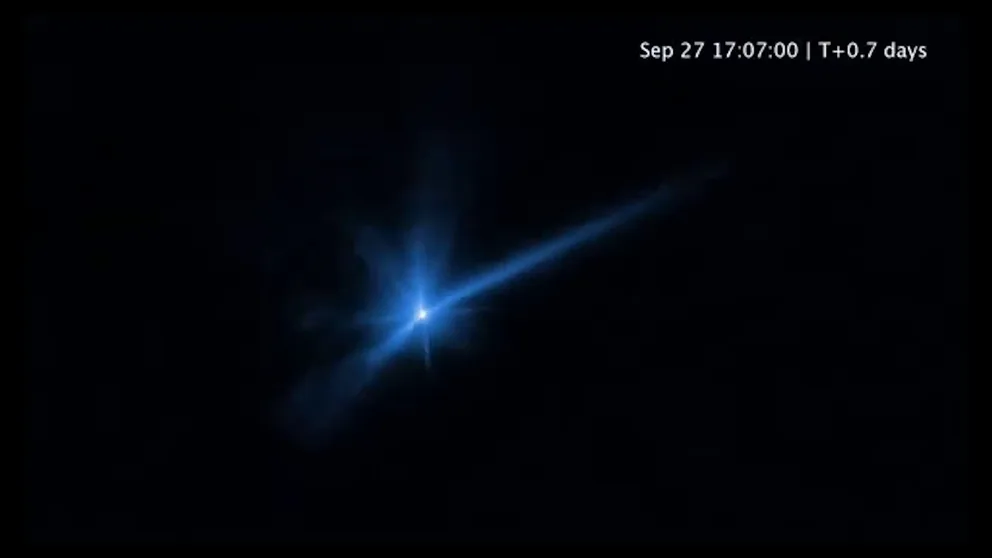New mini-moon to orbit Earth but won’t stay in the neighborhood for long
Astronomers say the newly discovered object 2024 PT will loop around Earth beginning in late September through most of November.
Watch: New video shows DART asteroid impact debris from Hubble space telescope
FILE VIDEO: A video NASA released on Wednesday shows the debris caused by the Double Asteroid Redirection Test (DART) mission spacecraft slamming into the asteroid Dimorphos. (Courtesy: NASA / ESA / STScI / Jian-Yang Li (PSI) / Joseph DePasquale (STScI))
Earth will soon have a visitor – and not of the extraterrestrial kind. Astronomers found a small asteroid that will orbit our planet this fall, becoming a "mini-moon" temporarily.
Earth only has one Moon, unless you count the asteroid Kamo'oalewa, which scientists believe came from a crater of the Moon anyway. However, for about two months this year, Earth will have another object orbiting the planet during a "mini-moon" phase.
According to a study published this week, the asteroid 2024 PT5 will orbit Earth in a horseshoe path from Sept. 29 until Nov. 25.
What is 2024 PT5?
Asteroid 2024 PT was discovered on Aug. 7 using the Asteroid Terrestial-impact Last Alert System (ATLAS), a NASA-funded instrument in Sutherland, South Africa. The ATLAS observatory consists of telescopes across Hawaii, Chile and South Africa that scan the skies every night, looking for new objects.

Asteroid 2024 PT seen on NASA's Jet Propulsion Laboratory small body database lookup.
The Apollo-class asteroid is believed to be part of the Arjunas near-Earth objects, a secondary asteroid belt associated with the Earth-Moon system. Asteroid 2024 PT5 is about 10 meters across and is not expected to impact Earth but instead will orbit at a safe distance of about 1 million miles from the planet.
Will you be able to see the mini-moon?
You will likely not be able to see the mini-moon because the object is only about 30 feet across and will require a telescope to see. Even then, it might be hard because 2024 PT5 is very dim and only visible at certain times of the day.
The asteroid won't make a full revolution of Earth, but astronomers are calling this a "captured flyby," in which the object makes a horseshoe path around Earth, getting pulled in temporarily by our planet's gravitational pull.
When will 2024 PT leave Earth’s orbit?
The mini-moon episode will end on Jan. 9 when the asteroid reaches as close as a little more than 1 million miles from Earth before "leaving the neighborhood of Earth shortly afterward," according to the study authors.
Based on the orbital dynamics and what scientists know about the asteroid, they believe it will return to Earth’s orbit again in 2055.
